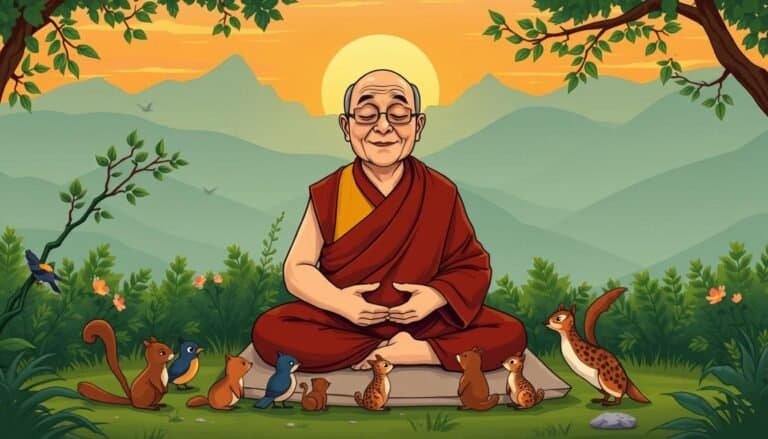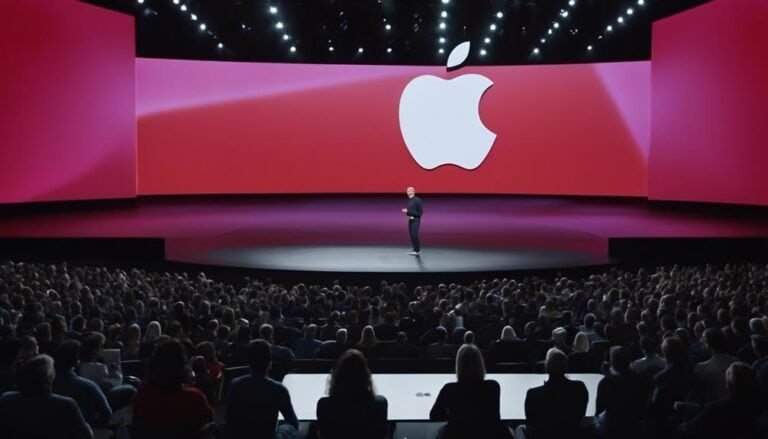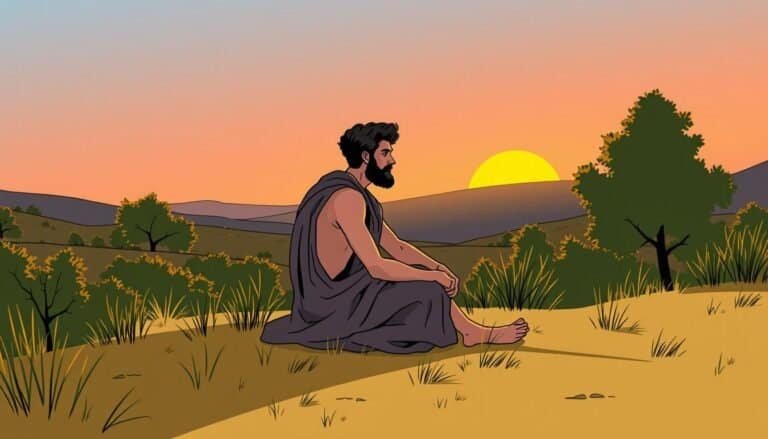Adam Grant’s Key Insights: Elevate Your Life
“Success is not the key to happiness. Happiness is the key to success. If you love what you are doing, you will be successful.” – Albert Schweitzer
Welcome to a journey of personal and professional growth with one of the most influential thought leaders of our time, Adam Grant. In his books, “Originals” and “Hidden Potential,” Grant offers valuable insights and strategies that can elevate your life and unlock your hidden potential. From leadership lessons to productivity tips, Grant’s teachings provide a roadmap for achieving success in the workplace and beyond.
Key Takeaways:
- Learn how to embrace procrastination as a strategy for original thinking
- Discover the importance of balancing risks and rewards in decision-making
- Understand how doubt and action go hand in hand for progress
- Uncover the power of fostering innovation through diversification and dissent
- Master the art of persuasive communication through powerless communication
Procrastination as a Strategy: Lessons from “Originals”
Procrastination as a strategy may seem counterintuitive, but Adam Grant’s book “Originals” highlights how delayed decision-making can lead to original thinking and favorable outcomes. Grant explores the concept of using procrastination as a means of fostering creativity and innovation.
In “Originals,” Grant shares historical examples that demonstrate the power of delayed decision-making. Abraham Lincoln, known for his Gettysburg Address, didn’t finalize his speech until the day before. Instead of rushing, he allowed time for new ideas to emerge, resulting in a timeless masterpiece that influenced generations.
A similar approach was taken by Martin Luther King Jr. when crafting his iconic “I Have a Dream” speech. By delaying the finalization of his script, he allowed his ideas to develop and evolve, ultimately delivering a speech that inspired change and became a defining moment in history.
“Procrastination gives you time to consider divergent ideas, to think in nonlinear ways, and to make unexpected connections.” – Adam Grant
Grant’s insights challenge the notion that procrastination hinders productivity. Instead, he suggests that embracing procrastination as a strategy provides the mental space necessary for original thinkers to explore novel ideas and concepts.
Favorable Outcomes of Procrastination as a Strategy
Grant’s research suggests that procrastination can lead to favorable outcomes. By allowing time for ideas to marinate, individuals can develop more innovative and creative solutions. Delayed decision-making promotes breakthrough ideas that wouldn’t have emerged if immediate action had been taken.
Implementing Procrastination as a Strategy
To harness the power of procrastination as a strategy, it’s essential to strike a balance between time for reflection and meeting deadlines. Grant advises setting early deadlines to avoid last-minute panic while still allowing ample time for generating and refining ideas.
| Steps to Implement Procrastination as a Strategy: |
|---|
| 1. Set early deadlines and prioritize tasks. |
| 2. Allocate dedicated time for creative thinking and idea generation. |
| 3. Embrace the discomfort of uncertainty and trust the process. |
| 4. Regularly revisit and refine ideas as they evolve. |
By applying these steps, individuals can unlock their original thinking potential and achieve favorable outcomes that result from embracing procrastination as a strategic tool.
Balancing Risks and Rewards: Key Insights from “Originals”
Grant’s “Originals” emphasizes the significance of balancing risks and rewards in the pursuit of success. Original thinkers understand the value of patience and delay, allowing their side projects to gain traction before making crucial decisions that may alter their lives.
“By taking calculated risks, individuals increase the likelihood of achieving favorable outcomes”
Grant argues that individuals who are willing to patiently invest in their side projects demonstrate a calculated approach to risk-taking. This means they carefully evaluate the potential rewards and ensure a favorable risk-reward ratio before making any life-altering choices. Such a mindset allows them to avoid impulsive actions and make decisions that align with their goals.
For example, imagine a passionate entrepreneur seeking to introduce a game-changing product to the market. Instead of quitting their stable job right away, the original thinker will invest their time and effort in developing the project on the side. They’ll patiently wait for their idea to gain traction, gather data, and validate their assumptions before risking their financial stability. This calculated approach increases their chances of success and mitigates potential negative consequences.
The Benefits of Calculated Risks:
Taking calculated risks offers several benefits:
- Enhanced decision-making: By thoroughly weighing the risks and rewards, individuals gain a deeper understanding of the potential outcomes and make more informed choices.
- Growth and learning opportunities: Embracing calculated risks exposes individuals to new experiences, challenges, and learning opportunities, fostering personal and professional growth.
- Increased innovation: Taking calculated risks encourages original thinking, creativity, and innovation. It inspires individuals to explore unconventional paths and challenge the status quo.
By embracing calculated risks and patiently investing in side projects, individuals can propel themselves closer to their goals while minimizing the negative impact of potential failures.
Real-Life Examples:
One notable example of balancing risks and rewards is the story of Elon Musk. Musk, known for his groundbreaking ventures such as Tesla and SpaceX, started with humble beginnings. Rather than diving headfirst into the space industry, he first ventured into smaller-scale projects like Zip2 and PayPal, building his expertise and reputation along the way. This patient approach allowed him to accumulate the resources, knowledge, and network needed to make further decisions and embark on more ambitious endeavors.
Another example comes from the world of entertainment. Actor and producer Dwayne “The Rock” Johnson began his career as a professional wrestler before transitioning to Hollywood. Instead of risking everything by immediately quitting wrestling, he pursued his acting career alongside it. By gradually building his acting portfolio and garnering recognition, Johnson minimized the financial risks associated with making a career transition.
| Benefits of Balancing Risks and Rewards | Realizations |
|---|---|
| Enhanced decision-making | Deeper understanding of potential outcomes |
| Growth and learning opportunities | New experiences, challenges, and growth |
| Increased innovation | Exploration of unconventional paths |
Doubt and Action: Lessons from “Originals”
Original thinkers understand that doubt and anxiety are natural parts of the creative process. Despite these feelings, they have the courage to take bold action in the face of fear. Adam Grant, in his book “Originals,” emphasizes that doubt should not hinder progress but serve as a catalyst for growth. By encouraging readers to act boldly even when feeling like an impostor, Grant empowers individuals to overcome self-doubt and unlock their hidden potential.
“Doubt is often the first sign of an original mind. It is the tension between creativity and doubt that produces innovation and progress” – Adam Grant
Grant asserts that original thinkers do not let doubt paralyze them. Instead, they recognize doubt as an integral part of their journey towards progress. They understand that embracing doubt and taking action despite it pushes them to discover new possibilities and break free from conformity.
One of the keys to navigating doubt is reframing it as an opportunity. Grant suggests that individuals should view doubt as a sign of growth and learning rather than a sign of incompetence. Transforming doubt into a driving force enables original thinkers to approach challenges with resilience, curiosity, and an unwavering belief in their ideas.
Fueling Progress through Doubt
Doubt within the creative process can fuel progress. It challenges traditional norms and offers a platform for original thinkers to question the status quo and explore unconventional ideas. By questioning existing assumptions and norms, original thinkers can make breakthroughs that drive innovation and change.
Grant’s research showcases that doubting existing solutions and seeking alternative approaches is critical for progress. It encourages individuals to challenge the assumptions and biases that may hinder innovation. By embracing doubt, original thinkers revolutionize industries, challenge societal norms, and pave the way for transformative change.
Nurturing Doubt: Embracing a Growth Mindset
To foster doubt as a catalyst for progress, Grant suggests cultivating a growth mindset. This mindset acknowledges that abilities and ideas can be developed through dedication, effort, and continuous learning. By embracing a growth mindset, individuals view doubt as an opportunity for growth and exploration rather than a roadblock.
Original thinkers actively seek out diverse perspectives and welcome feedback, enabling them to refine their ideas and expand their knowledge. They surround themselves with a network of collaborators who challenge their thinking and encourage them to iterate and improve.
The image represents the concept of progress, symbolizing the journey of original thinkers as they push through doubt and take action.
Grant’s insights on doubt and action remind us that doubt is an essential part of the creative process. By embracing doubt, original thinkers break through barriers, challenge the status quo, and make significant progress. So, the next time doubt creeps in, remember that it is an indication of your originality and a signal that you are on the path to greatness.
Fostering Innovation: Insights from “Originals”
In Adam Grant’s book “Originals,” he emphasizes the importance of fostering innovation by promoting the diversification of teams. By embracing different perspectives and backgrounds, organizations can unlock the true potential of creativity.
Grant cites the example of Pixar, a renowned animation studio known for its groundbreaking films. Pixar understands the power of diversity in driving innovation and creating unique storytelling experiences.
“Our goal is to create a diverse, inclusive, and safe environment that enables us to tell great stories. By nurturing a culture where different perspectives are valued and celebrated, we foster an atmosphere of creativity and problem-solving.”
Through fostering diversity, Pixar has been able to push the boundaries of traditional animation and bring forth captivating stories that resonate with audiences worldwide.
Studies have shown that diverse teams tend to excel in creativity and problem-solving. When individuals from different backgrounds come together, they bring a wide range of perspectives, experiences, and ideas to the table. This diverse collaboration leads to more innovative and well-rounded solutions.
Furthermore, diverse teams are better equipped to understand the needs and preferences of diverse audiences. This enables organizations to develop products and services that cater to a broader customer base and drive business growth.
Incorporating diversity and inclusion initiatives not only fosters innovation but also creates a more inclusive and equitable work environment. When employees feel valued and respected for their unique contributions, they are more likely to be engaged, satisfied, and motivated, leading to higher productivity and retention rates.
In conclusion, fostering innovation through the diversification of teams is a key insight from Adam Grant’s “Originals.” By embracing different perspectives, organizations can tap into a wealth of creativity and drive their success in today’s rapidly evolving world.
Benefits of Fostering Innovation through Team Diversity:
| Benefits | Explanation |
|---|---|
| Enhanced creativity | Diverse perspectives lead to more innovative ideas and solutions. |
| Better problem-solving | Different backgrounds bring varied approaches to tackling challenges. |
| Improved customer understanding | Diversity enables organizations to cater to a broader customer base. |
| Inclusive work environment | Diversity and inclusion initiatives foster a culture of respect and engagement. |
| Higher productivity | Engaged and motivated employees contribute more effectively to the organization’s goals. |
“Diversity is not about how we differ. Diversity is about embracing one another’s uniqueness.”
Rethinking Groupthinking: Lessons from “Originals”
When it comes to creativity and innovation, groupthinking has long been hailed as the ideal approach. However, Adam Grant challenges this notion in his book “Originals” and urges us to reconsider our traditional views on collaboration. Grant posits that dissent and discord are actually crucial elements for fostering groundbreaking ideas and pushing the boundaries of conventional thinking.
“Dissent, even conflict, can be a catalyst for creativity. It is through contesting and challenging viewpoints that we can unearth new perspectives and innovative solutions,”
Grant supports his perspective by examining the unconventional writing process of the iconic TV show Seinfeld. Rather than conforming to traditional groupthinking, the show’s writing team actively encouraged dissent and conflicting opinions during script development. This “contest culture” fuelled creativity, leading to the show’s unparalleled success and lasting impact on the comedy genre.
The Value of Dissent
Grant emphasizes that dissent and discord are not synonymous with chaos or counterproductive conflict. Instead, they serve as catalysts for unique insights and breakthrough ideas. By challenging prevailing assumptions and norms within a group, individuals can uncover hidden biases, identify blind spots, and explore alternative possibilities that may have otherwise been overlooked.
Moreover, dissent stimulates healthy debate and critical thinking, forcing individuals to reassess their own perspectives and refine their arguments. This process fosters intellectual growth and ultimately leads to more robust and innovative outcomes.
The Role of Creativity and Innovation
At the heart of Grant’s argument is the profound connection between dissent, creativity, and innovation. Creativity flourishes when individuals are encouraged to voice their dissenting opinions and challenge the status quo. By embracing diverse perspectives and welcoming conflicting ideas, teams can tap into a wider range of innovative possibilities and push the boundaries of traditional thinking.
Innovation, the driving force behind progress and success, thrives when dissent is viewed not as a disruption, but as an opportunity for growth. Grant suggests that to truly foster a culture of creativity and innovation, organizations must create an environment that celebrates dissent and empowers individuals to express their unique viewpoints.
“Innovation is born from dissent, disruption, and the willingness to question prevailing wisdom. It requires us to step out of our comfort zones and challenge the norms,”
By reimagining the role of dissent and discord in our creative processes, we open up new avenues for exploration, fueling originality and driving innovation forward.
| Rethinking Groupthinking | Benefits |
|---|---|
| Dissent and discord | Promotes critical thinking and challenges conventional ideas |
| Expanded perspectives | Unearths alternative possibilities and uncovers hidden biases |
| Catalyst for creativity | Stimulates healthy debate and sparks innovative thinking |
| Driving innovation | Fosters a culture of diverse perspectives and breakthrough ideas |
The Power of Powerless Communication: Insights from “Originals”
In “Originals,” Adam Grant delves into the fascinating concept of powerless communication and its persuasive prowess. By framing ideas as suggestions or recommendations rather than direct orders, original thinkers gain a unique advantage in influencing others and driving meaningful change. Grant highlights the benefits of this communication approach, such as disarming the audience and enhancing trustworthiness.
Powerless communication taps into the psychology of persuasion, leveraging subtlety and influence to deliver powerful messages. Rather than insisting or commanding, original thinkers present their ideas as offerings, inviting collaboration and nurturing a sense of ownership. This approach fosters a culture of open dialogue, encourages diverse perspectives, and builds stronger relationships within teams and organizations.
“The key to powerless communication lies in its ability to engage and connect with others at a deeper level. By framing ideas as suggestions, you invite individuals to explore, question, and ultimately embrace the potential of those ideas.” – Adam Grant
This communication style is particularly effective when faced with resistance or skepticism. By presenting ideas as less forceful directives, original thinkers overcome barriers and increase the likelihood of acceptance and implementation. Powerless communication empowers individuals to think critically and make informed decisions while ensuring their voices and contributions are valued.
Grant provides compelling examples of powerless communication in action. One such example is Steve Jobs, who famously presented his ideas as “let’s try this” rather than “this is what we’re going to do.” By utilizing this approach, Jobs inspired his team to explore innovative solutions and contribute to groundbreaking products.
In another example, Grant highlights the case of Mary Barra, the CEO of General Motors, who reframed layoffs not as a directive but as an exploration of questions like “What if we redesign our workforce to meet the challenges of the future?” This approach inspired a collaborative mindset, leading to creative solutions and a brighter future for the organization.
Incorporating Powerless Communication Into Your Leadership Approach
To harness the power of powerless communication in your own leadership journey, consider the following strategies:
- Engage in active listening: Develop a genuine interest in the ideas and perspectives of others. Show appreciation for their contributions and cultivate an environment where everyone feels heard and valued.
- Present ideas as possibilities: Instead of imposing decisions, present them as options to be explored and evaluated together. Encourage collaboration and foster a sense of ownership among team members.
- Embrace feedback: Create a feedback culture that encourages individuals to express their opinions and provide constructive criticism. Emphasize the value of diverse perspectives and continuous improvement.
- Lead by example: Use your own actions and communication style to exemplify the principles of powerless communication. Show vulnerability, admit when you don’t have all the answers, and encourage open dialogue.
In conclusion, the power of powerless communication lies in its ability to foster collaboration, build trust, and drive meaningful change. By embracing this approach, original thinkers can enhance their persuasive skills, cultivate stronger relationships, and create a more inclusive and innovative environment.
Cultural Fits vs. Cultural Contribution: Key Insights from “Originals”
When it comes to building a thriving organizational culture, the concept of cultural fits has long been emphasized. However, Adam Grant challenges this notion in his book “Originals” and highlights the importance of cultural contribution. Grant argues that prioritizing mentalities and individual contributions over simply fitting into a culture can lead to breakthrough projects and unparalleled innovation.
Instead of focusing solely on finding candidates who align with existing cultural norms and values, organizations should strive to promote a culture that values individuality and encourages diverse perspectives. By embracing a diverse range of voices and experiences, organizations unlock new possibilities and increase their chances of fostering breakthrough projects.
Grant’s research suggests that cultural contribution creates an environment where original thinkers are motivated to challenge the status quo, think outside the box, and question traditional approaches. By encouraging employees to bring their unique perspectives, skills, and ideas to the table, organizations not only foster creativity and innovation but also create a workplace culture that attracts top talent.
The Benefits of Cultural Contribution:
1. Breakthrough Projects: When individuals from diverse backgrounds collaborate and contribute their unique insights, breakthrough projects are more likely to emerge. By incorporating different perspectives and challenging conventional thinking, organizations can push the boundaries of what is possible and achieve exceptional results.
2. Enhanced Problem-solving: Cultural contribution brings together individuals with diverse skill sets, knowledge, and experiences. This collective intelligence leads to more robust problem-solving, as different viewpoints and approaches are considered, ultimately improving the quality of solutions.
3. Increased Innovation: A culture that values individual contributions fuels innovation. By empowering employees to think creatively and experiment with new ideas, organizations create an environment of constant improvement and pioneering thinking.
4. Improved Decision-making: When multiple perspectives are taken into account, organizations make more informed decisions. Diverse contributions challenge biases, reduce groupthink, and lead to well-rounded decision-making that considers a wide range of factors.
“Cultural contribution creates an environment where original thinkers are motivated to challenge the status quo, think outside the box, and question traditional approaches.” – Adam Grant
In essence, cultural fits alone may limit an organization’s potential, as they tend to reinforce existing norms and prevent the exploration of new ideas. By prioritizing cultural contribution, organizations can foster an environment of inclusion, creativity, and innovation, leading to groundbreaking projects and long-term success.
| Cultural Fits | Cultural Contribution | |
|---|---|---|
| Focus | Emphasis on alignment with existing cultural norms and values | Emphasis on individuality, diverse perspectives, and unique contributions |
| Impact on Innovation | Limited exploration of new ideas and perspectives | Encourages creative thinking and breakthrough projects |
| Approach to Diversity | May perpetuate homogeneity | Celebrates diversity and promotes inclusivity |
| Decision-making | Potential for groupthink and limited perspectives | Consideration of diverse viewpoints for well-rounded decisions |
Overall, by embracing cultural contribution, organizations can harness the power of diverse perspectives, nurture innovation, and foster an inclusive culture that inspires employees to bring their best selves to work. It is through this mindset that breakthrough projects and transformative change can be achieved.
Original Parenting: Lessons from “Originals”
When it comes to raising children, Adam Grant’s “Originals” offers valuable insights that can inspire parents to embrace original parenting practices. Original parenting is a mindset that encourages parents to foster their children’s individuality and creativity. By adopting this approach, parents can nurture their children’s unique talents and raise creative thinkers who are equipped to thrive in today’s ever-changing world.
“Original parenting is about creating an environment where children feel empowered to express themselves, explore their interests, and develop their own perspectives,” Grant explains. “It involves encouraging curiosity, embracing failure as a learning opportunity, and celebrating their original ideas.”
By giving children the freedom to express and explore their individuality, parents can help them develop confidence, resilience, and a strong sense of self. This approach fosters a growth mindset and encourages children to think critically, take risks, and find innovative solutions to challenges.
“Original parenting is not about molding children into predetermined paths or forcing them to conform,” Grant emphasizes. “It’s about guiding them to become authentic versions of themselves.”
Grant suggests that organizations can also benefit from adopting the principles of original parenting in their approach to managing employees. By treating workers as individuals with unique strengths and perspectives, organizations can tap into their full creative potential and inspire new ideas and breakthrough innovations.
Throughout “Originals,” Grant shares inspiring stories of individuals who were raised with an original parenting mindset. These individuals have gone on to make significant contributions to their fields, challenging the status quo and making a lasting impact on society.
The Benefits of Original Parenting
Original parenting has several benefits that can positively impact both children and organizations:
- Developing creativity: By encouraging self-expression and exploring their passions, children raised with an original parenting mindset are more likely to develop and nurture their creative abilities.
- Fostering independent thinking: Original parenting empowers children to think critically and form their own opinions, helping them become independent thinkers who are unafraid to challenge the conventional wisdom.
- Building resilience: By embracing failure as a learning opportunity, original parenting teaches children to bounce back from setbacks, develop problem-solving skills, and persevere in the face of challenges.
- Cultivating empathy and open-mindedness: Original parenting encourages children to appreciate different perspectives, fostering empathy and open-mindedness towards others.
- Promoting innovation: Organizations that adopt original parenting principles in their management approach unlock the full potential of their employees, leading to increased innovation, creative problem-solving, and successful outcomes.
By embracing the principles of original parenting, both parents and organizations can create an environment that celebrates uniqueness, encourages creativity, and fosters personal and professional growth.
Championing Unconventional Ideas: Insights from “Originals”
Adam Grant’s book “Originals” emphasizes the significance of championing unproven ideas for organizational progress. By challenging norms and embracing unconventional ideas, businesses can drive innovation and success. Grant provides insightful case studies that highlight the power of championing unconventional ideas in various industries.
The Swatch Watch: Challenging the Traditional Watch Industry
One notable example of championing unconventional ideas comes from the watch industry. The Swatch watch, introduced in the early 1980s, disrupted the market dominated by traditional luxury watch brands. Instead of following the norms of using expensive materials and complex designs, Swatch embraced affordability, vibrant colors, and a fun, casual aesthetic. This innovative approach captured the attention of younger consumers and revolutionized the watch industry, leading to significant success for the brand.
Sony: Championing Digital Photography
Another compelling case study of championing unconventional ideas is Sony’s venture into digital photography. When digital photography was still in its infancy, Sony took a bold step to challenge the dominance of traditional film cameras. Despite initial skepticism, Sony invested heavily in research and development, pushing the boundaries of digital imaging technology. This commitment to innovation ultimately led to the creation of game-changing products like the Sony Cyber-shot and Alpha series, propelling Sony to the forefront of the digital photography industry.
Embracing Unconventional Ideas for Organizational Progress
By championing unconventional ideas, organizations can foster a culture of innovation, attract top talent, and gain a competitive edge in the market. Embracing new perspectives and challenging established norms allows businesses to envision bold solutions, develop groundbreaking products, and create meaningful change in their respective industries.
Conclusion
Adam Grant’s books, “Originals” and “Hidden Potential,” are treasure troves of invaluable insights that can truly elevate your life. By delving into the world of original thinking, embracing risks, fostering innovation, and championing unconventional ideas, Grant provides practical strategies for personal and professional growth.
Whether you’re seeking to enhance your leadership skills, improve productivity, or drive workplace success, Grant’s teachings offer actionable steps to unlock your hidden potential and thrive in any setting. By incorporating his key insights into your mindset and actions, you can navigate challenges with confidence and pave the way for extraordinary achievements.
So, why wait? Start applying Adam Grant’s principles today, and embark on a transformative journey towards a more fulfilling and successful life. Elevate your thinking, embrace your uniqueness, and nurture a culture that values creativity and diversity. With Adam Grant as your guide, the possibilities are endless.








